The Gone Sounds of Jazz with Sid Gribetz
An archive of jazz radio programs focused on intensive in-depth looks at great themes from jazz history. Winner of the Jazz Journalist Association Award for Career Excellence, Sid has been broadcasting for over 40 years on WKCR-FM, NYC. He was also voted ’Best Jazz DJ’ by the Village Voice in its 2008 Best Of NY Issue.
Episodes
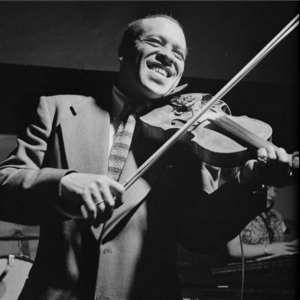
Monday Feb 03, 2025
Stuff Smith
Monday Feb 03, 2025
Monday Feb 03, 2025
Stuff Smith was an innovator of jazz violin and a leading figure of small group combos and jumpin’ entertainment in the 1930's.
Stuff Smith derived a deep, driving, sound on his fiddle, with unique voicings, heartfelt tones, and a fluid, driving sense of rhythm and swing that enraptured the soul.
He was a dynamic showman, a humorous vocalist with hit novelty songs such as “I’se A Muggin’”, “You’re A Viper”, and “Knock Knock Who’s There”. As his biographer Anthony Barnett has perceptively noted, Smith could fulfill the roles of comic jive at the same time as being a serious, investigative musician, like his hero Louis Armstrong, his pal Fats Waller, and his protégé Dizzy Gillespie.
Hezekiah Leroy Smith was born in Portsmouth, Ohio in 1909 to a middle class black family, his father a barber, mother a teacher, and both musically inclined. “Stuff” was a childhood nickname. His older sister played classical music, but Smith followed his father, who had a band that played for popular local dances. In his early teens he moved to study at Johnson C. Smith University in North Carolina, but with his footloose bent, discarded formal training and left school to go on the road as a professional musician.
Stuff’s first major experience was the Alphonso Trent orchestra, a traveling “Territory Band”, in the late 1920's. Settling in Buffalo, New York in 1930, Smith became a leading figure in the local African-American musical and business community, directing bands and nightclubs along with Jimmie Lunceford and Lil Hardin Armstrong.
Smith moved to New York City in 1936. Fronting a small combo including Jonah Jones he became an immediate sensation at the Onyx Club on fabled 52nd Street and made hit records.
Among other highlights, in the late 1950's Smith joined up with the impresario Norman Granz, who presented Stuff on records with Ella Fitzgerald, Dizzy Gillespie, Oscar Peterson, Stephane Grappelli and the like, and on concert tours with the Jazz At The Philharmonic. Later, Smith took up residence with Joe Bushkin in a storied and sophisticated engagement at the Embers.
He then went to Europe, moving to Copenhagen in 1965, with many other American jazz expatriates, and Stuff Smith developed a great following there. However, suffering from various health problems that had lingered, he died shortly after his 58th birthday, on September 25, 1967.
originally broadcast December 17, 2017
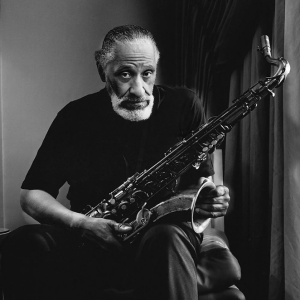
Sunday Feb 02, 2025
Sonny Rollins
Sunday Feb 02, 2025
Sunday Feb 02, 2025
WKCR presented a special marathon broadcast celebrating the 93rd Birthday of Sonny Rollins on September 7, 2023. I produced this three hour shift. It begins with a close look at Sonny's recordings as a member of the Clifford Brown-Max Roach Quintet, and then some casual sets featuring Rollins on RCA Victor in the 1960's, and Rollins with Thelonious Monk.
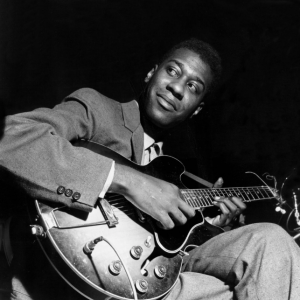
Sunday Jan 19, 2025
Grant Green
Sunday Jan 19, 2025
Sunday Jan 19, 2025
Grant Green was one of the all time greats of jazz guitar. His flame burned brightly for a time, but he is to a certain degree a “forgotten” star.
Green’s approach to the guitar was like that of a horn player. He played single note lines that were melodic and improvisational. His playing was free flowing and swung with a soulful spirit and deep grooves. He presented a crisp, uncluttered sound with impeccable phrasing. To top it off, there was a searing intensity to his art.
Grant Green was born in St. Louis in 1931 (although many sources say 1935) and came of age playing in jazz and R & B groups, with local players such as Sam Lazar, and Jimmy Forrest, with whom he made his first record, in 1959. He came to the attention of Lou Donaldson, and when Green was encouraged to move to New York, Lou introduced him to Blue Note Records.
Grant recorded prolifically for Blue Note. From 1960-1965, Green made over twenty sessions as a leader, but many were not issued during his lifetime. Recordings that are now considered masterpieces were “left in the can” and only posthumously released.
These albums included swinging sides with pianists such as Sonny Clark and McCoy Tyner, organ groups with progressive Larry Young and other B-3 players, and classic records such as “Idle Moments” with Joe Henderson, and “Grantstand” with Yusef Lateef. Green also made numerous memorable appearances as a “house guitarist sideman” on discs of all the Blue Note greats.
After an absence from the scene in the late 1960's to recuperate from health issues, Green moved to Detroit and from that base re-emerged in 1969 in the funk rock soul-jazz genre, mastering that groove, and for several years he was a sensation in that zeitgeist. However, later in the 1970's he had medical ailments and hospitalizations, and died young in 1979.
originally broadcast January 5, 2025
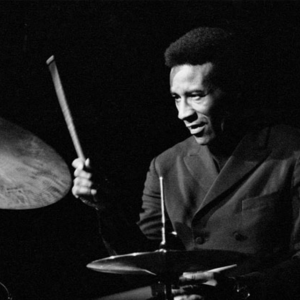
Saturday Jan 11, 2025
Max Roach 2
Saturday Jan 11, 2025
Saturday Jan 11, 2025
WKCR presents a marathon broadcast celebrating Max Roach annually, on his birthday anniversary, January 10.
For my segment on the 2025 edition, I prepared a set focusing on Max Roach’s contributions to great piano trio recordings. It includes sessions with Bud Powell, George Wallington, Thelonious Monk, Herbie Nichols, John Dennis, Sonny Clark, Duke Ellington, and the legendary Hasaan.
This episode begins with an appetizer of tracks from Brown-Roach and Max’s Quartet with Hank Mobley, then serves the main course of 2 ½ hours of the piano trio sides, and concludes with a dessert cordial of Allan Eager.
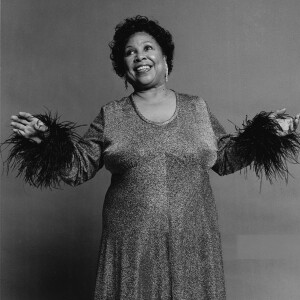
Friday Jan 10, 2025
Helen Humes
Friday Jan 10, 2025
Friday Jan 10, 2025
When Billie Holiday left the original Count Basie orchestra in 1938, how could she be replaced, and who could replace her? The musical answer is the incomparable Helen Humes, a major figure in her day but long overlooked. Helen was born in Louisville, Kentucky June 23, 1909 (a date sometimes made younger in press releases and reference books) to a middle class black family, her father a lawyer, just a generation removed from slavery.
As a teenager, she already made her name singing in the classic 1920's blues style and waxed popular records for OKeh. After working in banks and law offices, Helen spread her wings and sang with Al Sears in Buffalo, and on the road, where she came to the attention of Basie. For several years in the late 1930's and early 1940's, Helen was the featured female vocalist in the Basie band, sharing the microphone with blues shouter Jimmy Rushing. Helen sang with a fresh and girlish timbre that was playful and endearing, yet she also conveyed the wizened and worldly wise emotions of the blues and popular song book, that enabled her to fill Billie’s shoes. After leaving Basie, Helen established herself in the post war years in Los Angeles as a popular attraction, recording with old jazz friends such as Buck Clayton, Lester Young and Benny Carter. More notably, she became a dynamic star in the burgeoning rhythm and blues field with hits such as “E-Baba-Leba”, “Million Dollar Secret” and “They Raided The Joint”. In the late 1950's, Helen toured Australia with Red Norvo. Upon returning stateside Humes made some stunning recordings of classic standards with the Contemporary label that gave her some acclaim. However, she then retired for many years to care for her elderly parents back in Louisville.
Humes made a startling comeback when Stanley Dance presented her at the Newport Jazz Festival in 1973. Concert appearances in Europe, new record contracts, and engagements at Barney Josephson’s The Cookery in Greenwich Village gave that rarest accomplishment, a second act in American arts. Helen died in 1981.
originally broadcast July 24, 2016; re-broadcast 2022

Monday Dec 30, 2024
Roy Eldridge 1
Monday Dec 30, 2024
Monday Dec 30, 2024
WKCR has a long standing tradition of celebrating Roy Eldridge, “Little Jazz”, with a marathon 24-hour broadcast tribute every year on the trumpet giant's birthday anniversary, January 30.
Here’s my shift from the 2024 edition. Three and a half hours, comprised of individual segments highlighting Roy’s associations with Oscar Peterson, Mildred Bailey, Tiny Grimes, Billie Holiday, Artie Shaw, Gene Krupa, and the Newport Rebels.
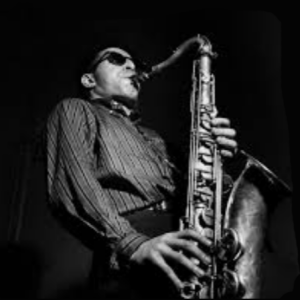
Friday Dec 27, 2024
JR Monterose
Friday Dec 27, 2024
Friday Dec 27, 2024
JR Monterose possessed a very strong and personal emotional tone on the tenor sax, and he is one of the underrated masters of the modern jazz era.
Frank Monterose, Jr. was born in 1927 and raised in Utica, NY. The moniker JR comes not from initials but from being a Jr. but he usually spelled it without punctuation. Monterose started his professional career briefly in the big bands of Buddy Rich and Claude Thornhill. As a young man, he also performed widely in upstate New York in various settings under his own name.
Monterose moved to New York City in 1954 where he quickly established himself in the modern jazz scene. He performed with various notable groups and appeared on some seminal recordings of the period. Among his credits are classic albums from stays with Teddy Charles and Charles Mingus, participation in Kenny Dorham’s regular working band “The Jazz Prophets”, and collaborations with Hod O’Brien and Wilbur Ware, among others.
In the 1960's, the vagabond Monterose moved on, with stops as a local legend in places like Cedar Rapids, Iowa, on the West Coast, and then many years in European outposts. Monterose returned to the United States in the late 1970's and became a fixture in Albany and elsewhere in upstate New York in venues like the Lark Tavern. He died of cancer in 1993 at the age of 66.
This program features major recordings, such as Mingus’s “Pithecanthropus Erectus” Charles’s “Relaxo Abstracto”, and Dorham’s Café Bohemia dates, as well as Monterose’s sides as a leader, ranging from Blue Note in the 1950's, to rarer later discs.
originally broadcast March 17, 2024
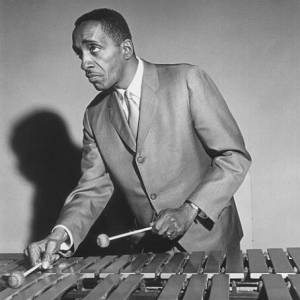
Wednesday Dec 18, 2024
Milt Jackson
Wednesday Dec 18, 2024
Wednesday Dec 18, 2024
Milt Jackson was one of the all-time jazz greats on the vibraphone. First, he was an innovator bringing this esoteric instrument to the bebop revolution of Dizzy Gillespie and Charlie Parker. Additionally, he possessed superb musicality that added to the popularity of the instrument. Beyond utilizing the percussion role of the vibes, Jackson played with fleet, free flowing lines suitable to modern jazz. He was a master of a soulful, piercing, driving sound. While at slower tempos, with notes elaborated and sustained for romantic effect, he would play ballads or the blues that communicated with the listener to the core.
Milt Jackson was born in Detroit on January 1, 1923. His father was an auto worker but also a musician who played several instruments. The family was raised in the gospel church where they all played music. Young Milt exhibited proficient musical talent at an early age, and he played several instruments, including piano, guitar and drums, and also sang. He attended Miller High School which had an excellent music department [in a de facto segregated African American school in Depression era America], and he played these, and other instruments, in their bands. When he was still a teenager, his father bought him a set of vibes. Jackson served in the Armed Forces during World War II, then upon discharge to civilian life in 1944 he began a career as a professional musician in earnest, focusing on the vibes.
Jackson drew the attention of Dizzy Gillespie and moved to New York in the fall of 1945 to join the trumpeter’s band. Significantly he joined Dizzy and Charlie Parker on their seminal tour of the West Coast in December 1945.
Nicknamed “Bags”, Jackson was ubiquitous during the founding years of bebop, playing not only with Diz, frequently, and Bird, but also most of the other young turks. Bags also had a notable and sympathetic association with Thelonious Monk and appears on many of his early recordings.
By the early 1950's Jackson was a star. He served in many small combos, performed frequently, and recorded numerous memorable and swinging recordings as a leader. Additionally, in small groups he teamed up with pianist John Lewis and bassist Percy Heath and drummers first Kenny Clarke, and then Connie Kay, to produce a refined chamber jazz sound in a quartet setting. This eventually became a formal group, the “Modern Jazz Quartet” (MJQ), which transcended musical barriers. With their touch of elegance, the MJQ became an international attraction which toured and performed regularly into the 1970's.
Thereafter, Bags renewed pursuit of an individual career, made notable records for CTI and Pablo Records, led his own touring groups often backed by the band of Mike LeDonne, Bob Cranshaw, and Mickey Roker, and reunion appearances with the MJQ.
Jackson died of cancer in October 1999 at the age of 76.
originally broadcast January 15, 2023
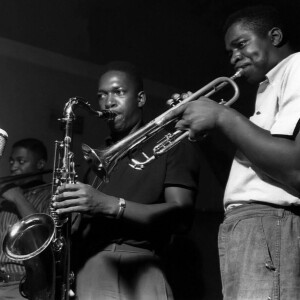
Wednesday Dec 11, 2024
Donald Byrd with John Coltrane
Wednesday Dec 11, 2024
Wednesday Dec 11, 2024
WKCR presented a marathon special broadcast saluting Donald Byrd, in December 2024.
For my contribution, I prepared a set surveying Donald Byrd’s intersections with John Coltrane.
In the period 1956-1958, only shortly before each in their own way were to burst forth separately to a next level of stardom, Byrd and Coltrane appeared together (though not "in tandem") on several recording sessions. They made dates with Elmo Hope, Paul Chambers, Sonny Clark (the classic LP “Sonny’s Crib”), Art Blakey, and Prestige blowing encounters with Red Garland. All nice listening with wonderful extended solos and prime collaboration.
originally broadcast on December 10, 2024
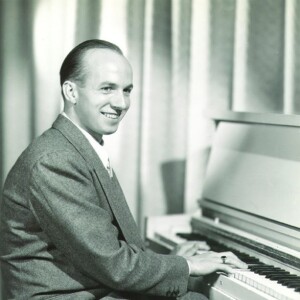
Wednesday Dec 11, 2024
Jimmy Van Heusen
Wednesday Dec 11, 2024
Wednesday Dec 11, 2024
The best in jazz derives from its interpretations of the great American popular songbook, and Jimmy Van Heusen was one of its composer-giants. In 2013, the centennial of Van Heusen’s birth, we added this jazz flavored element to its commemoration.
Van Heusen was born in Syracuse, NY on January 26, 1913 as Edward Chester Babcock. He began a musical career in high school and worked as a radio disk jockey, taking the stage name Van Heusen from the shirt company. He moved to New York City in the thirties to start as a professional songwriter, his first major association coming at the Cotton Club, arranged by his friend Harold Arlen. His first big number was “Darn That Dream”, written for Benny Goodman, soon followed by the likes of “All This And Heaven Too”, “Shake Down The Stars” and many other hits.
By 1940, Van Heusen teamed with lyricist Johnny Burke and wrote for over 30 films for Paramount Pictures, and also for the Broadway stage. The Burke-Van Heusen partnership lasted well in to the 1950's and produced classics such as “Polka Dots And Moonbeams”, “Imagination”, “But Beautiful”, “It Could Happen To You”, “Here’s That Rainy Day”, and “Like Someone In Love”.
After Burke semi-retired, Van Heusen joined forces with Sammy Cahn and continued to write for the movies, with chestnuts like “All The Way”, “The Second Time Around”, “Come Fly With Me”, “Call Me Irresponsible”, and too many more to mention. He became an intimate of Frank Sinatra and was involved in much of Sinatra’s success in this period. Van Heusen died in 1990 at the age of 77.
This radio program presents jazz versions of Van Heusen’s songs featuring many instrumental improvisations, and also vocal versions from greats such as Billie Holiday, Dinah Washington and Etta Jones.
originally broadcast February 24, 2013

